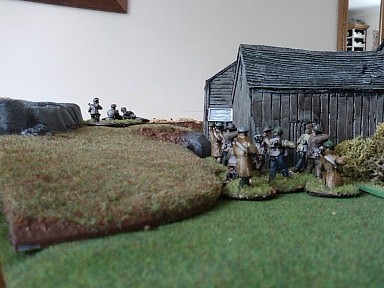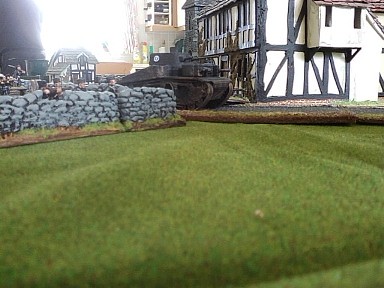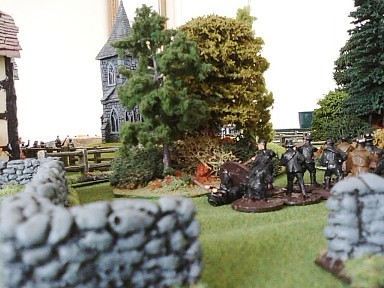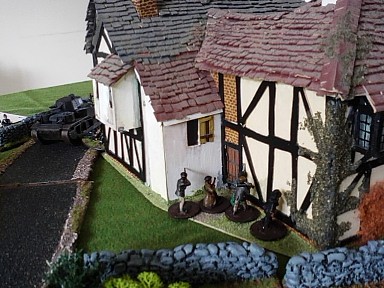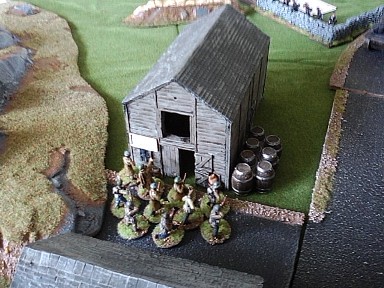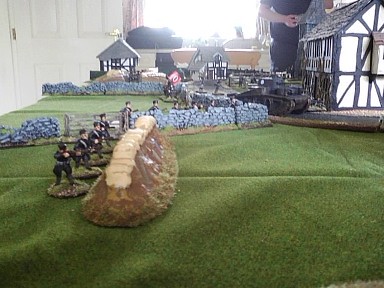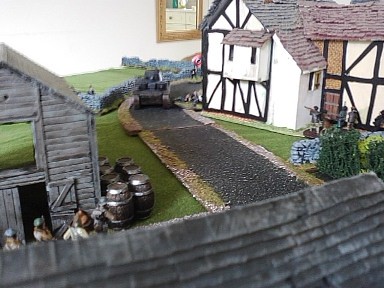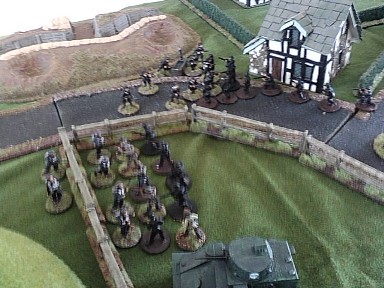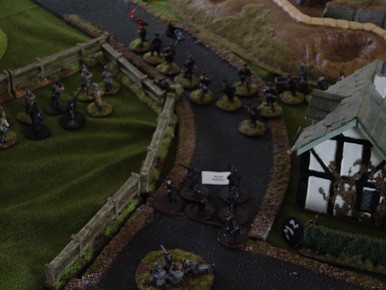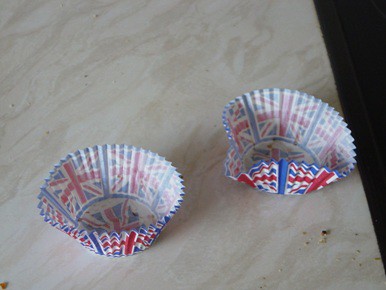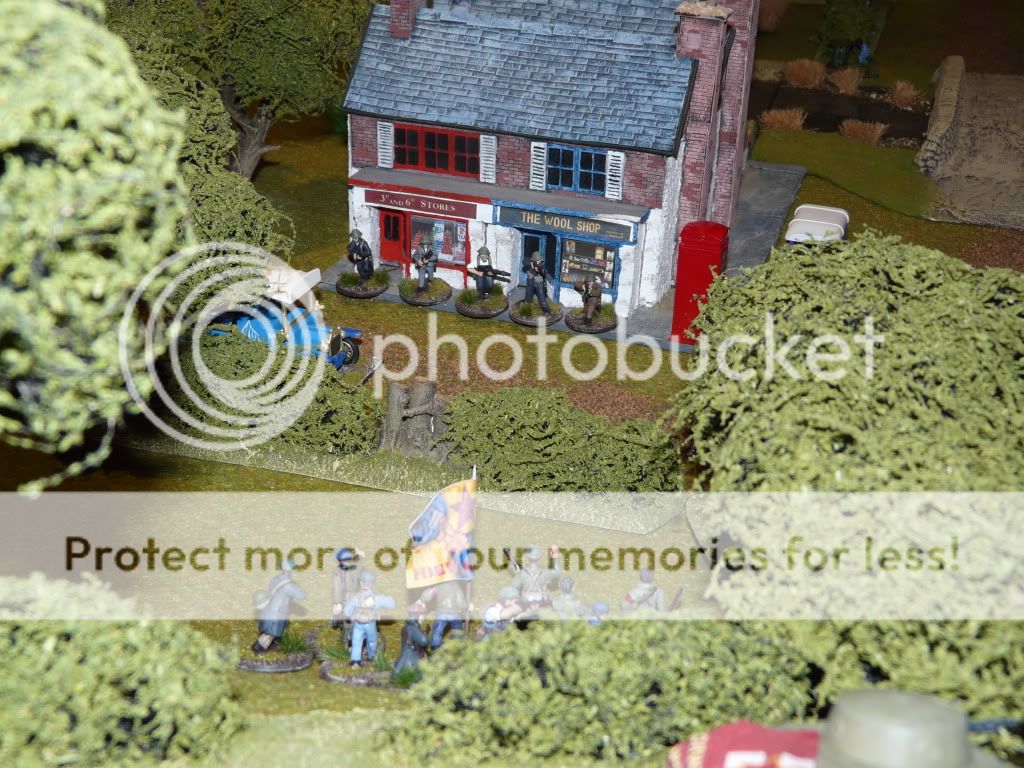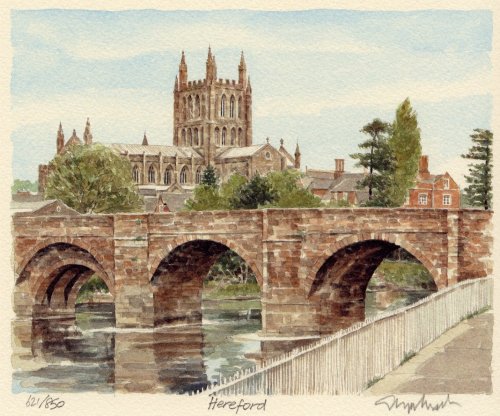I recently came upon a great website that contained PDF copies of every publication of 'Flight' magazine from 1906 to 2005. A quick search revealed some interesting facts about Herefordshire, including the campaign for an airport, the Three Counties race and the role of Painter Brothers in aeronautical manufacturing.
Even in those days, politicians would go to any lengths to canvas for votes, as is evidenced by this piece in the September 9, 1920 edition of Flight:
“During the War Mr. Geoffrey Le M. Mandes was in the Royal Flying Corps. He is now utilising his skill then acquired, in his campaign as prospective Liberal candidate for North Hereford Division. This week he was responsible for a flying exhibition, a feature at Leominster Agricultural Show.”
In April 8, 1926, it was reported that: “MRS. ELIOTT-LYNN, the energetic lady member of the London Aeroplane Club, made a successful parachute drop from an aeroplane at Hereford on April 3. When attempting this feat the day previous, the machine carrying her developed engine trouble just as she was about to jump, and had to make a forced landing, with Mrs. Eliott-Lynn still clinging to the side of the aeroplane.”
As reported on September 20, 1928, the Isle of Purbeck Light Aeroplane club came to the aid of the agricultural sector:
"Club work has been somewhat curtailed this week, owing to the fact that the Spartan, living up to her name, became restless on hearing about the milk war. Feeling it was necessary to soothe her and assist our firm friends the farmers, we offered her services to Alderman E. W. Langford, Mayor of Hereford and Chairman of the National Farmers' Union Milk Committee, who has since been airing his views and himself in almost every milk-producing area in the country, from Wiltshire to Northamptonshire, and incidentally we believe controlling the Spartan as well as the milk war."
Politics came to the fore again in 1929, as shown by an article in the May 30 edition entitled ‘Touring Constituencies by Light ‘plane’: “Capt. H. M. Yeatman flew his own Cirrus-Moth to help Maj. F. M. Dougall contest Hereford in the Liberal interest. Maj. F. M. Dougall is on the staff of the Daily Express.”
Hereford Aerodrome
The December 13, 1928 edition of Flight reports on the efforts of a number of towns in getting a municipal aerodrome:
“Hereford's possibilities as an air station for traffic flying between the North of England and South Wales and the West country were discussed by the Hereford Chamber of Commerce recently. The Chairman, Mr. G. W. Russell, said it behoved Hereford to be in the van, and see that the claims of the city were furthered. Mr. Storr-Barber said that it would be of great advantage to the city to become an air station, and it might be that the promotion of such an establishment might lead to the coming of a factory. The Chairman then proposed that they inquire what steps other towns were taking, and then do something direct. It is stated that there are many places in the vicinity that could be adapted to the purpose.”
In the April 18, 1929 edition, Hereford is listed as one of the towns ‘which have sites in view’. A couple of years later and things have moved on a little with the establishment of the Hereford Aeroplane Club:
“Progress in establishing a municipal aerodrome at Hereford has not been very evident for some time, but now that there is a movement on foot to establish the Hereford Aeroplane Club. We trust that this latter may be the means of making the authorities wake up to the value of having their own aerodrome. The Lord-Lieutenant, Sir John Cotterill, Bart., has consented to become patron to the club. The subscription has been fixed at £3 3s. for pilot members, /2 2s. for ordinary members who are entitled to fly only as passengers, and 10s. 6d. for junior members. A committee has been formed, and Mr. P. Gwynne James, of Marston House, Belmont Road, Hereford, will be glad to furnish further particulars to anyone in the district who is interested.”
In May 22, 1931, Hereford is listed as one of the towns where ‘complete surveys of the environs’ had been made.
However, the December 7, 1933 issue reveals little change in the situation. In an article entitled “THE POSITION TO-DAY - A Guide to the Municipal Airport facilities offered by the sixteen established Airports”, Hereford is listed as one of the ‘towns which have had sites inspected’. Optimism must have still been high however, for in April 5, 1934, it was reported that “At a meeting of the Hereford Council recently, a ten minute air service between Hereford, Gloucester and Worcester was forecast.”
By 1936 it seemed like an airport at Hereford was on the cards, situated by the racecourse. The site had already witnessed the Three Counties Air Race (see below) and the opening paragraph of a report on that event in September 24’s issue stated:
“After seven years of endeavour by a few interested Hereford people, notably Mr. W. Shimmins, the engineer and surveyor, it would appear that the city may have its own airport within the next twelve months. Purchases have been made and options obtained on quite a lot of land beside the existing racecourse, and the fact that, even now, the teeshaped site is usable was shown last Friday, though, on first sight, the runs appeared to be inadequate when the boundary obstructions were taken into consideration.”
What better way to christen the airport, then to hold a thrilling air race!
The Three Counties Air Race of 1936
Flight’s August 20th, 1936 edition contained an article entitled ‘Hereford comes in’, in which it was announced that:
“On September 18 and 19 a flying meeting and handicap air race over three laps of a triangular course between Hereford, Gloucester and Worcester, is being organised. A cash prize of £50 and the Hereford City Trophy goes to the winner, with two other trophies and £30 and £15 for the second and third finishers. The pilot making fastest time, the first lady finisher and the first pilot flying a machine with an all-up height of less than 8oolb. to finish will each be awarded a trophy. The race will start at 11 a.m. on Saturday, September 19 and all normal entries must be in by first post on September 12; late entries at double fees can arrive by first post on September 18.
The "base camp" will be the old racecourse at Hereford, which is being cleared by the city council, and will be officially recognised by the Air Ministry as a landing ground; the runs are about 800 yards, in each direction.
Unfortunately, the organisers have not noticed that the London-Cardiff race is due to be held on the same date, and, as this is something of a classic, it is likely to take all the entries. Perhaps the Hereford show can still, in the circumstances, be dated back a week.
Pilots and manufacturers who are interested should write to Mr. J. Buckley, c/o Thome's, Ltd., Commercial Road, Hereford. The organisers are Western Aircraft Sales, Ltd., 18, The Butts, Worcester.”
Concern over clashes with the London-Cardiff race must have indeed caused problems as the Hereford race was later brought forward a day to the Friday, starting at 3pm.
The September 24 issue chronicled the great race. See above for the opening paragraph of the article, which then continues:
“For the Three Counties Air Race there was certainly an extraordinarily good entry, some score of machines appearing on the line for the start, including one or two of those owned by our better-known racing pilots, and such larger types as a Monospar S.T. 25, flown by Mr. Seth-Smith, and a D.H. Dragonfly, flown by Mr. S. F. Woods for Mr. S. Harris. Every machine got off with plenty of room to spare and the only unpleasant moment occurred when a certain very experienced pilot carried away a few telephone wires on his arrival. Although roomy enough, the ground was a trifle rough at the end of the run and the most interesting sight of the afternoon was that provided by a score of pilots vying with each other in the work of making the shortest possible landing over obstructions. Some of these were incredibly short and showed what could be done—with care.
The whole affair was run on most informal lines. The course consisted of three laps of a not-too easy thirty-mile circuit, and the pilots were handicapped on their own estimated speeds, anyone exceeding this speed being disqualified. The Rev. Cecil Boulton (Spartan) was the limit man and W. Humble (Hawk Six) was on scratch.
Even after the first lap the placings had obviously altered considerably, though it was difficult to follow the race. After two laps all manner of things had occurred. R. F. Hall (Avro Cadet) had worked up from eleventh place, through ninth place, to the lead; the. Misses Glass (D.H. Moth) had moved from fourth to second; and the Spartan was flying fourth. Humble was not yet in the picture, though he had picked up two or three places, the Monospar was running twelfth after starting in fifteenth position, and S. T. Lowe (Comper Swift) had moved from sixteenth to eleventh.
The finishing order of the leaders was as follows: 1, R. F. Hall (Avro Cadet), 45 min. 34 sec.; 2, Miss Mabel Glass (D.H. Moth), 48 min. 0 sec.; 3, A. F. E. Payen (D.H. Puss Moth), 45 min. 14 s e c ; 4, P. D. Hayn (D.H. Moth) and S. T. Lowe (Comper Swift) ; 5, C. H. Tutt (D. H. Moth) ; 6, K. G. Seth-Smith (Monospar).
Thereafter, pilots and others adjourned for further informal proceedings at the City Arms Hotel.”
After the race, some participants hoped to race in the London (Heston)-Cardiff event. However: “the Misses Glass could not get through to start after the Hereford event; they came on to Cardiff in time to see the finish after putting down at Cheltenham. Humble and Napier got through from Hereford to Heston by the skin of their teeth and by virtue of the latter's intimate knowledge of the Great Western Railway”
Last word should perhaps go to the author of ‘Topics of the Day’ in the same issue, who had a thing or two to say about ‘safety first’. While warning readers that ‘you cannot play the fool with an aeroplane’, he also wrote:
“Motor racing and air racing are only good because the competitors are pitting their skill against those risks, and I consider, for instance, that the two competitors in the Hereford race, who were also flying in the Cardiff event, were fully justified in taking some chances in getting back to Heston for the second race when the weather was really too bad for cross-country work without radio. Equally justified were the other less experienced competitors who put down on the way to Heston and ‘gave in.’”
The Airfields of Britain Conservation Trust lists the racecourse airport as operational between 17 September 1936 - 1952, with another airfield near what is now Wyvale between 10 September 1921 - September 1939.
Aeronautics manufacturing and other businesses in Herefordshire
In March 11, 1932, it was announced that with the exception of business with the Air Ministry and the Royal Household, the whole of De Havllland aircraft sales in England would be handled by three concerns, and they in turn would be responsible for the organisation of sales throughout their own particular areas.
Herefordshire came under the aegis of Phillips & Powis Aircraft (Reading), Ltd. Who were responsible for the Counties of Buckingham, Berkshire, Oxford, Northampton, Warwick, Leicester, Rutland, Worcester, Gloucester, Stafford, Shropshire, Hereford, Monmouth, Glamorgan, and Somerset, north of the Railway Line connecting Clevedon, Axbridge, Wells, Shepton Mallet and Frome.
One of the new companies listed in June 18, 1936 was Western Aircraft Sales, Ltd: “Private company, registered June 10. Capital, £1,000 in £1 shares. Objects : to carry on the business of manufacturers
of and dealers in aeroplanes, airships, etc. The permanent directors are : 'Robt. White, "Crahmond," Hampton Park, Hereford (director of H. B. Rogers Motors, Ltd.); Edward R. Exell, Greenacres, Bobblestock, Hereford .”
In the June 25, 1936 edition, an advertisement for the Midland Gliding Club Ltd of Birmingham invited readers to ‘Learn to fly without an engine and make pleasure of it.’ Primary grounds were listed as Handsworth, Northfield and Hereford, with a Soaring Centre at Long Mynd and Church Stretton.
Mr. White appeared again in April 29, 1937 under another local company - Aeroparts Engineering Company Ltd: “Private company, registered April 25. Capital, £3,000 in 3,000 shares of £1. Objects : to carry on the business of aircraft constructers and builders and type-testers of engines and aeroplanes, etc. The directors are: Hugh K. Pierson, Cyril H. Shelton, Robert White. Solicitor: Frank T. Carver, 44, Bridge Street, Hereford.”
This company advertised in the Situations Vacant section in July 8, 1937: Inspector for detail parts, with workshop or drawing-office experience. Aeroparts Engineering Co. Ltd., Phoenix Works, Hereford.
Painter Brothers
Painter Brothers, founded at Hereford in 1920 and incorporated in 1929, is a major British fabricator of structural steelwork and one of the leading producers of bolted lattice steelwork in the world.
In the March 11, 1937 issue, notice was given of Painter Brothers’ heavy-duty storage bins:
“Giving details of their new system of unit-construction storage bins, a booklet has been issued by Painter Bros. Ltd., of Hereford, and of 60, Hillmarton Road, Caledonian Road, London, N.7.
The bins, made of heavy-duty British mild steel, galvanised with pure zinc, give 18 cu. ft. of storage space, or 16 cwt., in each compartment.
They are constructed on the multiple unit principle, in standard four-high units, for either single wall or back-to-back storage. Both types can be supplied with either open or closed backs.”
The company (in conjunction with Callender's Cable and Construction Co Ltd.) provided the steelwork for the first Callender-Hamilton unit-construction hangars ordered by the British Air Ministry in the pre-World War II rearmament programme. An article to this effect appeared in the January 20, 1938 edition:
“The Air Ministry has had eight of the Callender-Hamilton unit-construction hangars erected on various sites, and the necessary steelwork is now available on a commercial basis. The famous cable and pylon firm have placed the hangar on the market in conjunction with Painter Bros., Ltd., of Hereford, after exhaustive tests.
Some of the claims are: Lightness with low cost, standardisation of parts, ease of transport and erection, all connections by bolts, and all parts protected against corrosion by special hot-dip galvanising (as used on " grid " towers) after fabrication. The sliding doors system incorporated gives maximum clear opening, the foundations may or may not be set in concrete, and the roof, sides and doors can be covered with any form of material.
The steel framework consists of a series of box girder ribs comprising vertical stanchions supporting flat pitch roof girders of similar cross section. These girders give normal clear height of 25 feet on a span approximately 10a feet. Any* length of hangar may, of course, be built by adding bays as required. The manufacturers, Painter Bros:, are specialists in the fabrication and galvanising of light steel structures.”
Munitions
With a possible war looming, Flight issue January 7, 1937, had this to report:
“Westward Ho! The explosives departments of Woolwich Arsenal are shortly to be moved to new arsenals at or near Chorley (Lancashire), Bridgend (Glamorgan), Irvine (Ayrshire), and Hereford. Some superficial thinkers have been writing in the papers that as the increasing endurance of aeroplanes will soon put all parts of the British Isles within the range of a Continental enemy, there is no great advantage in moving westward.
Such a view overlooks the fact that the passage of raiders across England, even for half an hour, very greatly increases the chances of the defence. The course of the raiders can be followed and plotted, and time is given for guns and fighter aeroplanes to get ready for them.”
I assume by ‘Hereford’ the article is referring to ROF Rotherwas, which is another story altogether…
























